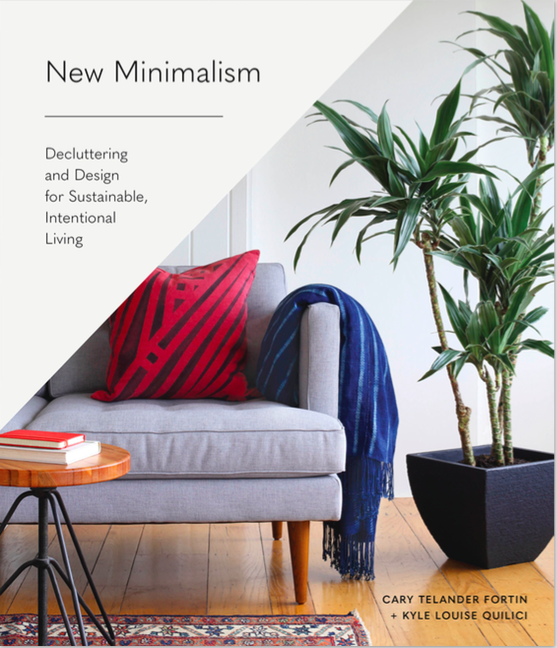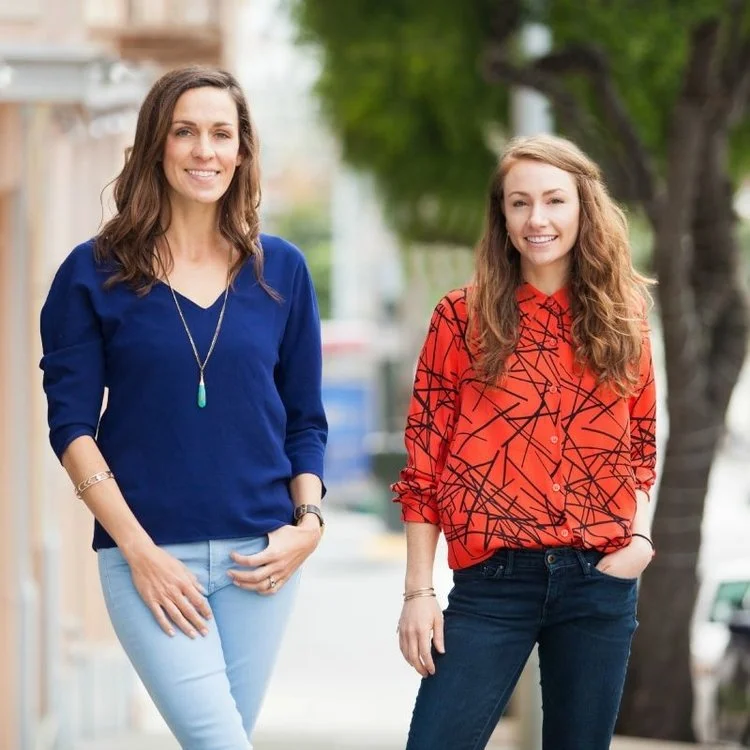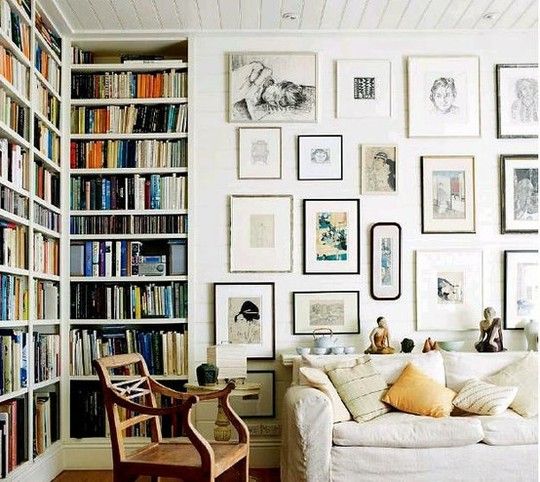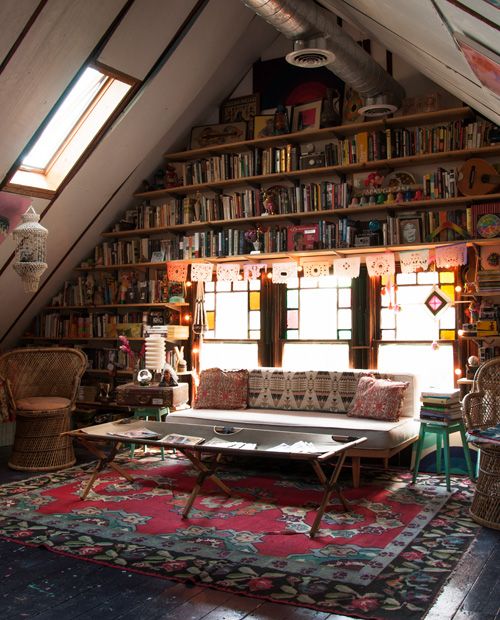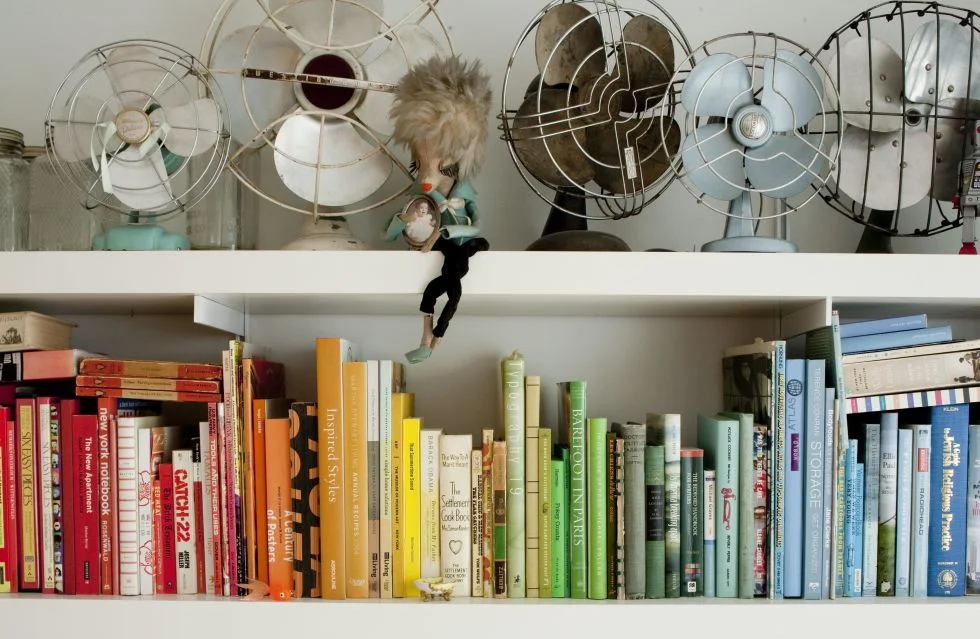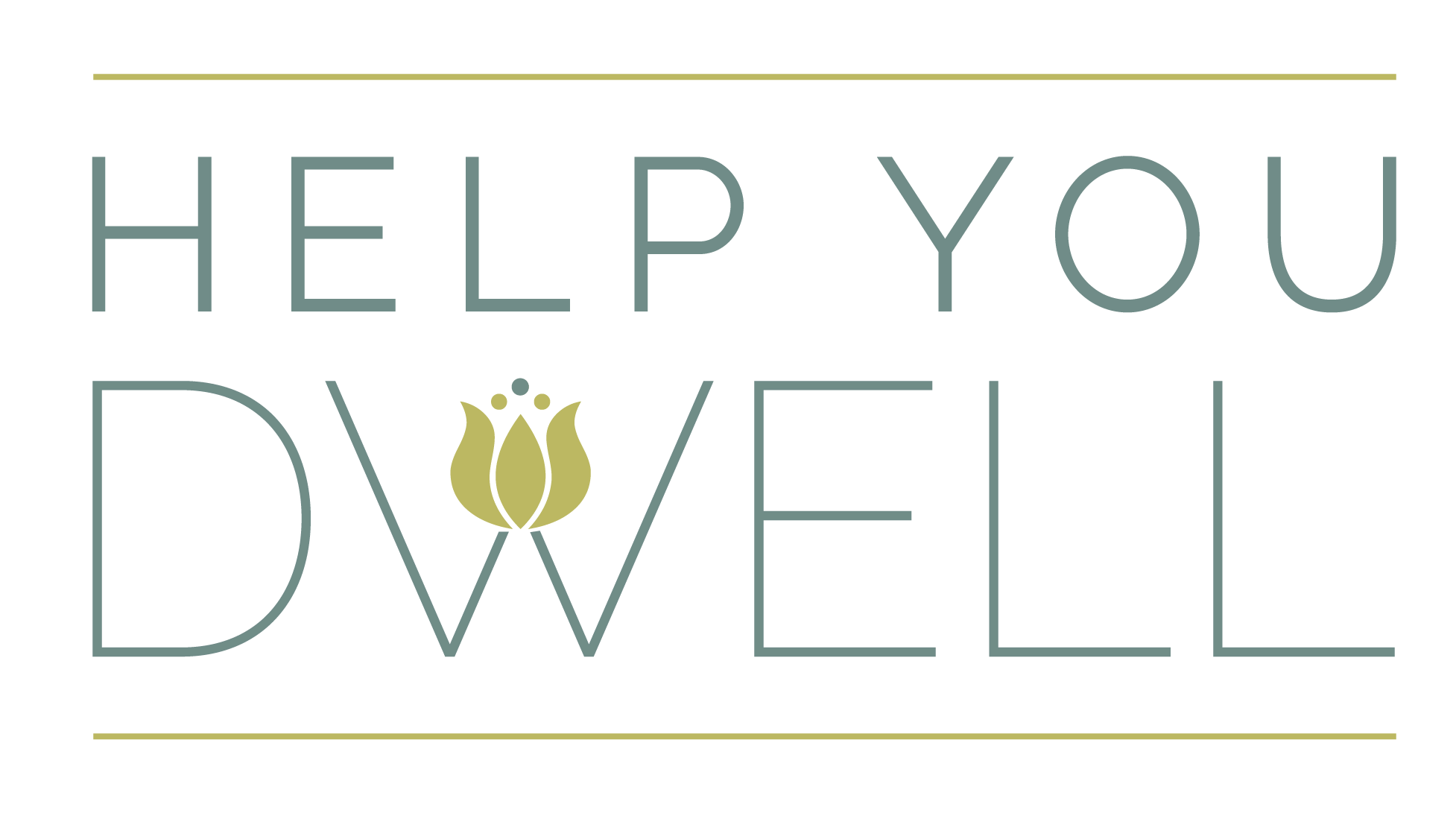One of the most interesting parts of our job is being invited into peoples homes to help them make sense of their belongings and their homes. I can’t tell you how many times we’ve been working with folks who have such a hard time with clutter and yet own just about every home organizing book that has come out in the past 5 years, a vast array of bins and baskets in every size, shape, and color, and have a thing for planners. It’s tempting to think that the next book or tv show or podcast will offer you a piece of advice that will change everything, but it’s just not the case— we’ve rounded up a few of the top selling organizing books that have come out in the past few years and given an honest review of them here for you.
What We're Reading
What we're reading
We just finished a great read & wanted to share our thoughts with you. There are a lot of “organizing” books out there, and most of them are highly focused on the practical and tangible aspects of the process. New Minimalism: Decluttering and Design for Sustainable, Intentional Living has so much more to offer than just the “how to” organizing info. It feels like they speak our language, when it comes to listening and understanding a client’s specific needs before prescribing what to do and how to do it.
“The key to making the decluttering process feel easy and light is to exercise gratitude. We focus on gratitude because it helps root us and makes us feel calm as we enter this process. It is an antidote to anxiety, fear, and shame. Guilt dwells in the past. Gratitude grounds you in the present.”
- New Minimalism, Cary Fortin + Kyle Quilici
They offer a framework of 4 Archetypes that expound on how individuals personally relate to their possessions. The archetypes are used to help express why it’s hard for a particular person to declutter, while keeping the focus on the positive side of how we relate to our things. This framework can be such a helpful tool when learning your own archetype or the archetype of people you live with.
Here’s a real brief overview of the archetypes:
We love the way they offer a process and plan for helping folks declutter and organize, but they do it in a fluid and flexible way that is tailored to each specific client. In our five years of experience, we find this way of organizing is helpful for clients — there is no one right way for everyone to simplify their lives.
Here’s a few other excerpts we loved from the book:
“Here is the place where we can’t help but expound on one of our favorite philosophies: the myth of choice. Somewhere in our cultural evolution toward a consumer heavy lifestyle, some great advertising goddess came up with the brilliant idea that more is better. This idea has become so ingrained in our American ethos that we believe having more options liberates us and allows us to be our most fulfilled and most creative selves. Even that language - liberty and creativity - is at the very core of what we’ve always held to be the cornerstone of enlightened civilization. Yet it has been proven that having more choices does the exact opposite of giving us freedom. It leads us to feel overwhelmed, unsatisfied, and confused.”
- New Minimalism, Cary Fortin + Kyle Quilici
Cary + Kyle
The gals who wrote this book have a deep appreciation for being conscious consumers, as well as kind to our environment. They even venture to say “ the choices we make in the kitchen, just like the choices we make about our wardrobes, echo through our day and our communities”. We couldn’t agree more with the idea that our choices effect much more than just our own lives and well being.
In regards to mail, they preach the same message we’ve been empowering clients with for a long time… “Make sure that as soon as you get your mail from your box or front door, you open all important pieces, then shred & recycle them once they are no longer needed. If you don’t have time to open your mail, we would recommend leaving it in the mailbox until you do have time, rather than bringing it in and not sorting it. Otherwise piles start to grow”.
We really appreciate the way these women highlight and credit other professionals in the organizing realm, like Marie Kondo & Karen Kingston. This collaborative posture is one we can totally support.
At their best, our homes are a reflection of our hopes, our current values and our history. While having meaningful objects from our pasts can be beautiful, we need to achieve a fine balance, lest we become rooted in our history and unable to move forward into our future.
- New Minimalism, Cary Fortin + Kyle Quilici
This read is chock full of wisdom about making thoughtful decisions and shifting your perspective. We found ourselves nodding our heads and underlining so many pages. If you want to be encouraged and equipped to live more simply and intentionally, we highly recommend grabbing a copy.
We are cheering Cary and Kyle on as they continue to serve clients in the San Fransisco area. Follow them on Instagram to see glimpses of what they do! Grab a copy of their book and stay tuned for their second book, New Minimalism Guided Journal, set to come out in early 2020. They also have a wonderful blog.
donating and selling books
As organizers, one of the questions we consistently get from our clients is how and where to donate or sell the books that they are ready to pass along. We've compiled our list of recommendations and are eager to share it with you.
If you are ready to organize and purge your books, we recommend that you take the time to look through all the books throughout your home. Rather than simply purging a bookcase in one of many places that you keep reading material, plan to put your hands on every book in the house! Don't forget cookbooks, textbooks, and children's books. Once you've gone through all of them and have your purge pile, the following steps will come in handy...
Step 1: Determine whether each book is donate-able/sell-able or whether it simply needs to be recycled. If it's water damaged, dry rotted, or torn up it's not worth donating. Go ahead and recycle that sucker.
Step 2: Donate: If you don't want to fool with selling, simply donate your books to your local library or to a thrift store. If you have children's books to donate, you can also drop them at one of the many free little library's around town.
Step 3: Selling: There are many approaches and ways to go about selling your books. For a quick way to offload mass quantities of books, McKays is our recommendation. The amount of books you drop off will determine how you sell/how long you wait. For guidelines check out this link. In addition to McKays, Amazon now has a buy back program for certain books that they will pay shipping for and purchase from you in exchange for an Amazon gift card. For textbooks we recommend Barnes and Noble's buy back program.
Step 4: Enjoy the space you've created in your home by purging the books that you no longer need or want!
books, books & more books
DECIDING WHICH BOOKS TO KEEP
Photo via bookriot.com
Consider these questions when sorting through which books you'll keep and which you are willing to part with:
When was the last time I read this book?
Will I read it again?
If it's a cookbook, do I use it? Hint: the presence of food stains indicates a keeper.
Is the book a classic?
Does the book have specific value — is it a signed copy, first or collectible edition?
Is the book out-of-print or hard to replace?
Do you have mulitple copies? (Just keep one)
Do you have an electronic version of this book? (Let the paper version go)
Is this a book I've borrowed and need to return?
WHAT TO DO WITH BOOKS YOU'RE LETTING GO OF
Donate to: Friends of the Knox County Library, KARM, The Salvation Army, local churches
Specifically gift relevant books to: family members, neighbors, co-workers, or friends.
Recycle: if a book is beyond repair & has seen better days
Consign: your books at McKay's Books
WHAT'S ON OUR BOOKSHELVES
Chasing Slow, Erin Loechner
The Life-Changing Magic of Tidying Up, Marie Kondo
domino: Your Guide to a Stylish Home, Editors of domino
The Nesting Place, Myquillin Smith
STYLED BOOKSHELVES
Photo via designsponge.com
Photo via designsponge.com
Here's a fun video showing a few different ways to style your own bookshelf. And a cute infographic drawing of the different styles!
A Gem for Your Bookshelf
We certainly hope that as the summer sets in, you can find time to indulge in some leisurely reading. Pick a sunny spot at the pool or your favorite comfy chair at home and create some mental space to unravel. Introducing one of our favorite reads...
The Nesting Place by Myquillyn Smith
Why we love it?
It's not full of crazy unattainable design ideas that will break the bank.
It is full of concepts to create more functional and organized living space.
She's real; which is refreshing in a social media atmosphere saturated with seemingly "perfect" people and homes.
It's not only relevant to homeowners; she speaks to renters as well.
We say a big AMEN to the "Have a Seat" chapter, all about rearranging and redecorating using the pieces you already have in your home
She's got great design taste!
Who loves The Nesting Place?
Ann Voskamp: "Brilliant... this is one wise, real, winsome book you can't put down."
Shauna Niequist: "This book made me look at every room in my house differently."
Emily Freeman: "If you have ever felt like you're waiting for your next place to be the home you've always dreamed of, I beg you to read this encouraging, personal, hilarious book and let the Nester change your mind."
Help You Dwell: "The perfect mix of inspiration, beauty and practical ideas for any living space. And it looks good on your coffee table!"
Some of The Nester's recent treasures.
Another fun idea from The Nester's blog... beauty hunting. What is "beauty hunting"? The Nester defines it like this: "Beauty Hunting is thrilling, it’s like an act of rescue, I feel like I’m part of a SWAT team to find lovely things in the midst of a bunch of weird stuff." Check out other people who are #onthebeautyhunt - Now, that is something we can get on board with! Some places to begin your beauty hunting in Knoxville: KARM, AMVETS Thrift Store, Community Chest of Knoxville, and Nostalgia on McCalla. What are some of your favorite places to find pieces for your home?
So a few ideas for you this summer...
Pick up your copy of The Nesting Place.
Stop chasing perfection, it just ain't real. #idhtbptbb
Start your own beauty hunt. Happy hunting!
Organizing Kids Rooms
Playrooms and kids' rooms are often some of the hardest spaces to organize. Finding a good balance of knowing when the toys are taking over but also keeping a wide range of options to foster creativity and fun is a challenge. Organizing for kids is a hard task. While respecting what an individual child enjoys playing with, there are ways to purge without ending up with lots of tears over toys that are missed.
1. Talk with your kids about what happens to toys that they let go of. Help them see the story that they play a part in when they donate toys to children that may not have toys to play with like they do. If you have a child that gets excited to participate in the process of purging, let them be a part of the process. Ask them which toys they would like to share with a less fortunate child.
2. If your child isn't as willing to let go of things, take a few weeks to intentionally notice what toys they spend the most time playing with and which toys are neglected, or maybe they have grown out of. For children less willing to purge when the toys are taking over, try boxing up all of the toys that you believe they are done with. Keep the box in a hidden location for two weeks and if they haven't noticed or don't seem to mind that the toy is gone, give it away. Concentrate on helping your children value relationships more than things.
3. Specific toys to keep: Try to keep toys that help foster creativity, furthering education, and thinking skills. Art and Craft supplies, dress up clothes, building blocks, games, etc.
4. If your kids share a room, help them make their own space feel special. Sometimes kids need their own space and sometimes they need to learn how to share space well. Whether your kids share a room or have their own, making an effort to hang their favorite poster, frame their best art creation(s), create a reading nook, or frame a photo of your child with their best friend can make them feel proud of their own space and, hopefully, lead to taking more responsibility of keeping it in order.
Photo: James Henry / bauersyndication.com.au
5. Kids clothes.
It's amazing how quickly kids grow out of their clothing. This is an ongoing process. Each season, go through each closet and toss or donate items that are worn out or no longer fit. If you have younger kids that will grow into things in the future, just keep the well maintained items & box up clothing by size and sex and store somewhere other than their closet if you have the storage space available. When it comes to kids closets, make sure items are stored in a way that makes it easy for them to become more independent. Can they reach the things they need to? Is it obvious where things go?
6. Kid storage.
Coming up with a way to organize toys and games that is conducive to kids can be complicated. Bins can be a great help as a solution. This unit has the ability to do both store in bins and on shelves which can be helpful with multiple shapes of toys. Getting items off the floor and onto shelves or in bins is a must.
7. Kids books. The best advice here is have lots to choose from on shelves that your kids can easily reach. Color coordinating can be a fun project for kids and is much more practical in re-shelving than alphabetically.
8. Art supplies. Which supplies do you want them to be able to access without you present? Which supplies do you only want used with adult supervision? This changes with age so reorganizing is necessary over time. Going through and tossing broken, dried up etc. Storing in a way that allows kids to participate in clean up process. I've had great success over the years with a small chest of 4 drawers. It has grown with the kids starting with a drawer for play-doh, one for wooden puzzles, one with all kinds of paper to now holding all sorts of markers, paints, clay & older kids art items.
As always, HYD is here to help if you're needing a little boost to get these projects started. Just drop us a line at info@helpyoudwell.com or call us at 865.245.9080.
These 5 Things : November 2014
Image from A Daily Gathering
1. How to live in 86 square feet. I bet you didn't think it was possible.
2. Check out this Ted talk about living with less.
3. Need creative ideas for your home? This book is on our wishlist.
4. We are gearing up for Thanksgiving and this article from the Washington Post is a great place to start if you are looking for ideas for getting your home ready.
5. We are a little bit in love with this tiny new york apartment. Check out these 13 tips for decorating small spaces.
